HAL’S BRIGHTON
The Setting for the opening of The Death of Mrs Westaway
When I begin my books, the setting is always as much a part of the novel as the characters themselves. I love to travel in books – both in my own, and in my reading – and my novels have been set everywhere from Norwegian Fjords to Northumbrian forests.
This time, however, I wanted to start somewhere closer to home. And so I set Hal up as a tarot reader in Brighton.
I grew up near Brighton, and while it has a fairly well-deserved reputation as a rather middle-class, cosy town where every third person is vegan and every fourth person is pressing their own fair-trade, sustainably sourced tofu, the reality is (as usual) more complicated.
It’s true that Brighton has more than its fair share of artisan coffee shops, beard grooming salons and hipster gin tasting bars, but like most seaside towns, it also has a lot of poverty, homelessness and a population of seasonal workers who can sometimes struggle to make ends meet during the winter months. Nowadays the Pier is open year-round, but the demand for candyfloss and Mr Whippy definitely wanes in November and January, and it can feel a pretty bleak, lonely place on a winter’s evening, when the wind is whipping off the sea, and the salt spray in the air drowns out the more homely smells of fish and chips.
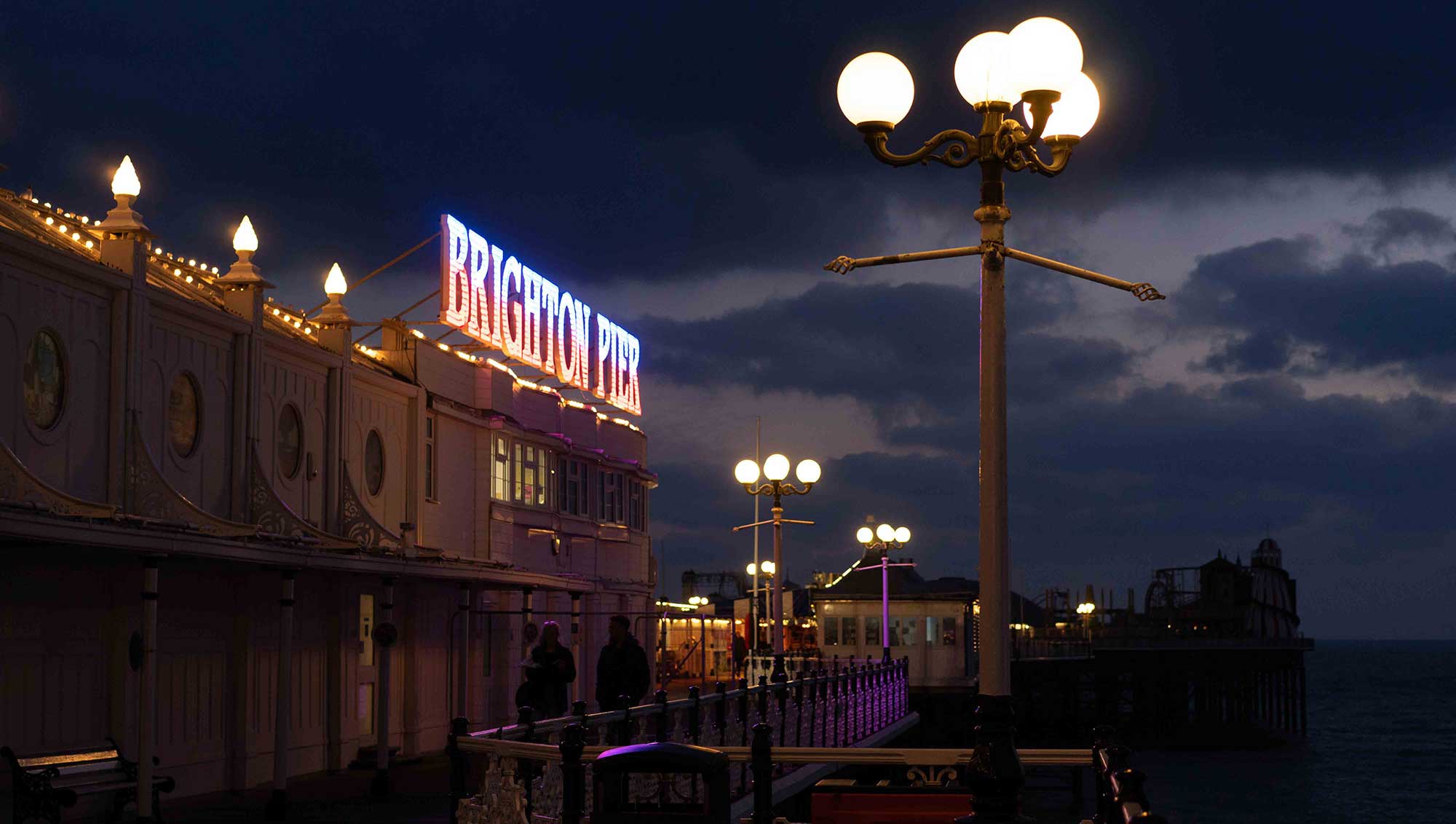
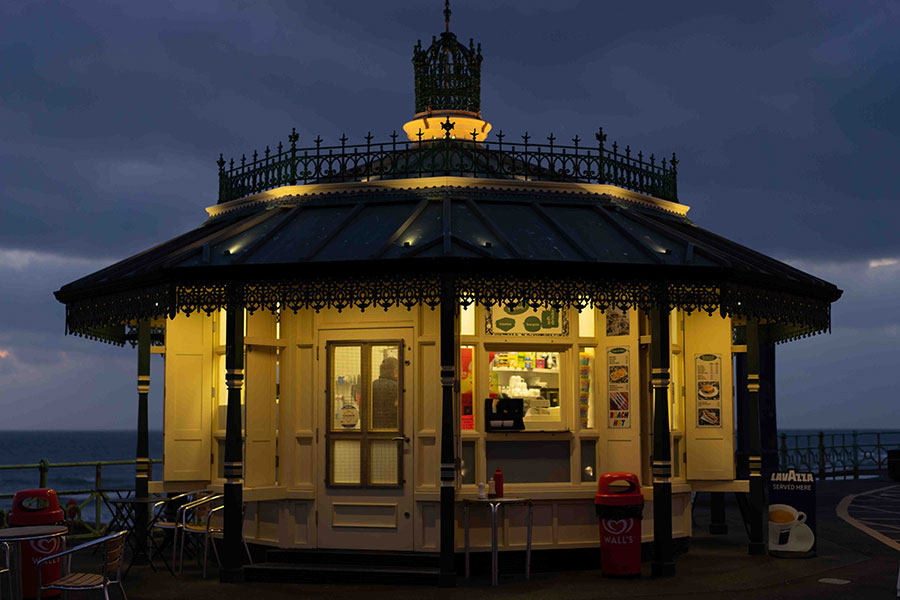

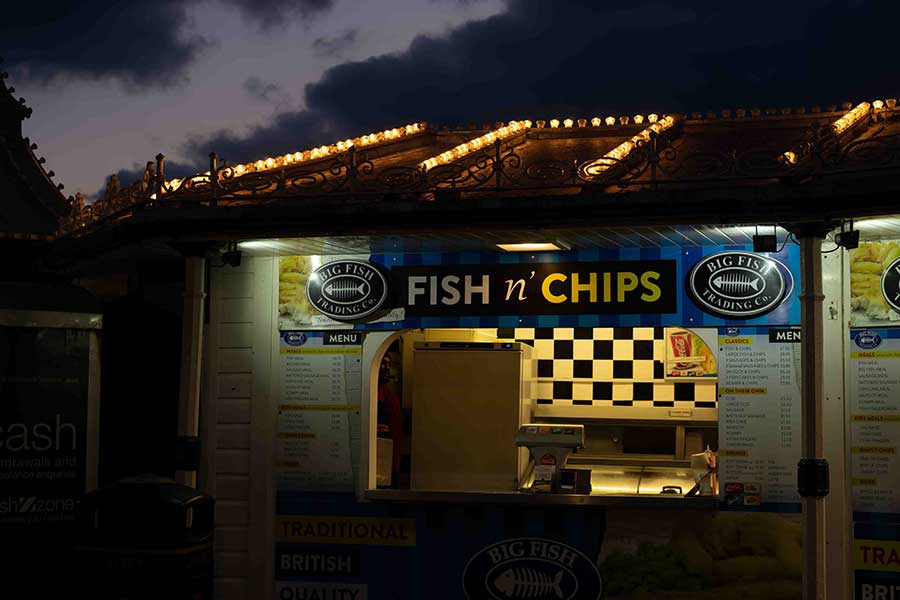
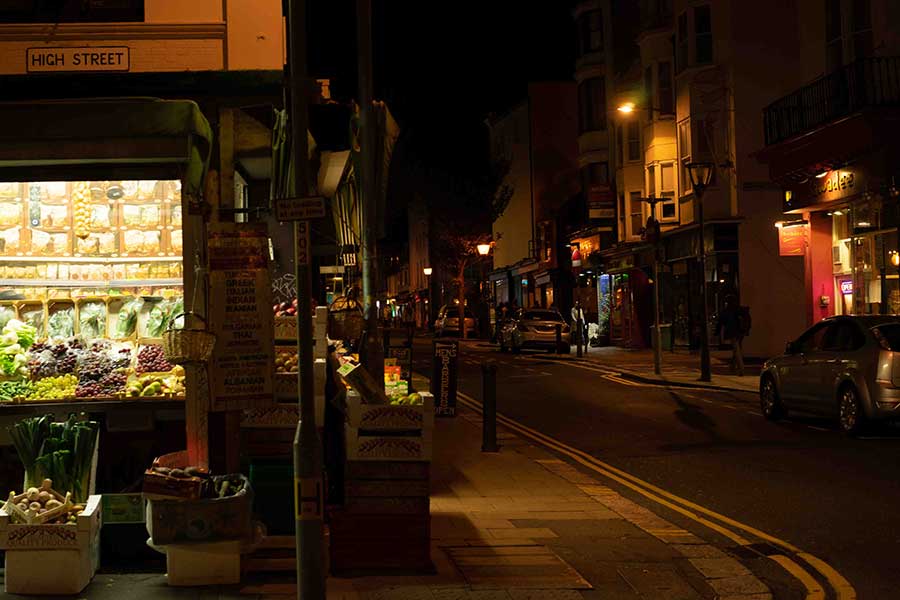
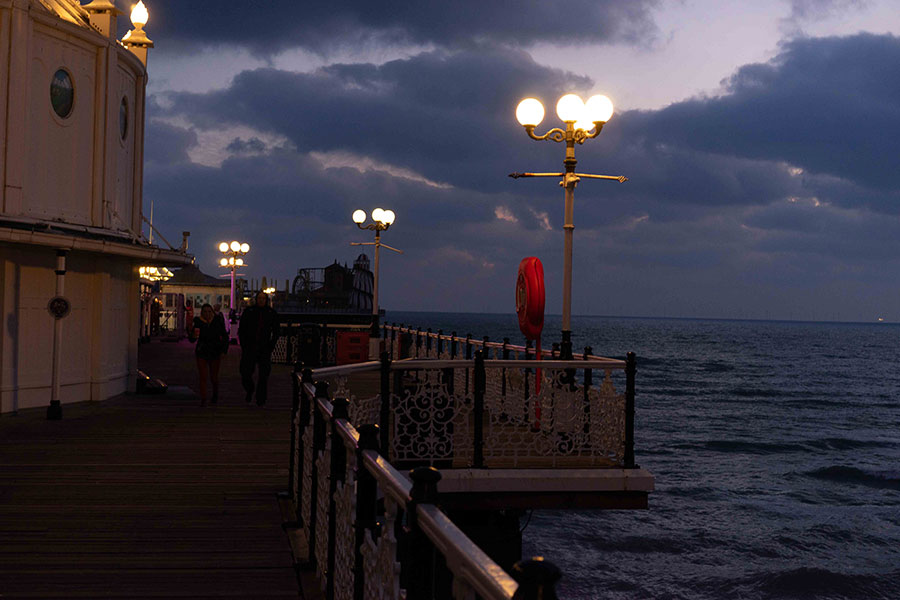
MY GUIDE TO HAL’S BRIGHTON
There are loads of swanky aspirational guides to Brighton, showcasing its beautiful hotels, regency architecture and up-market restaurants, but I thought I’d do you my guide to Hal’s Brighton – the winding back streets, cheap shops and greasy spoon diners – in short, the Brighton you have to hunt for a little bit.
The West Pier
https://www.westpier.co.uk/
I have to start with the West Pier – because it’s Hal’s pier. Anyone who knows Brighton well probably blinked at my description of Hal walking past Palace Pier towards her job on West Pier – for the very good reason that West Pier no longer exists. In its heyday, West Pier was even more beautiful than Brighton’s Victorian Palace Pier – listed as a grade one historic monument due to its architectural splendour and completeness. However, it was closed decades ago, and although for a long time locals hoped it would be restored and re-opened, in 2003 it was wrecked beyond repair by catastrophic arson attack, followed by a devastating storm. Now there is almost nothing left except the metal skeleton, which is used as a roost by thousands of starlings, making Brighton seafront the site of one of the UK’s largest remaining starling murmerations as they swoop and flock, preparing to bed down for the night.
Since the Palace Pier already has a rather well known tarot reader (the fabulously named Ivor Fireman, who operates out of an original Romani Vardo caravan) I decided to revive the West Pier and give Hal her own little Victorian booth there. The details I describe in The Death of Mrs Westaway, from Reg’s tea-shack to the charity boxes at the mouth of the pier, exist only in my imagination, but I enjoyed resurrecting this beloved local monument.
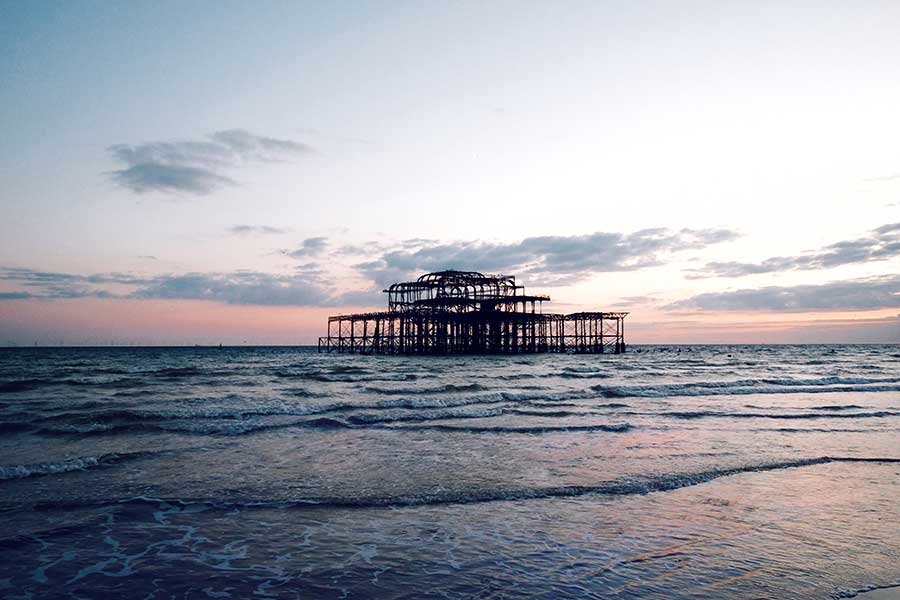
The North Laines —Snooper’s Paradise
https://www.facebook.com/Snoopers-Paradise-338028052958027/
Snooper’s Paradise is a Brighton institution. Situated in the delightfully ramshackle North Laines, it’s a haven of independently owned stalls, selling vintage clothes, second-hand nick-nacks, 70s vinyl, costume jewellery, faux-fur coats, old magazines, psychedelic party wear – everything you can imagine and then some. There are options for every budget, and although Hal’s not really a clothes person, I could imagine her surfing the racks looking for something warm and practical – or maybe even picking through one of the bookshop stalls and stumbling across a dog-eared pack of tarot cards.
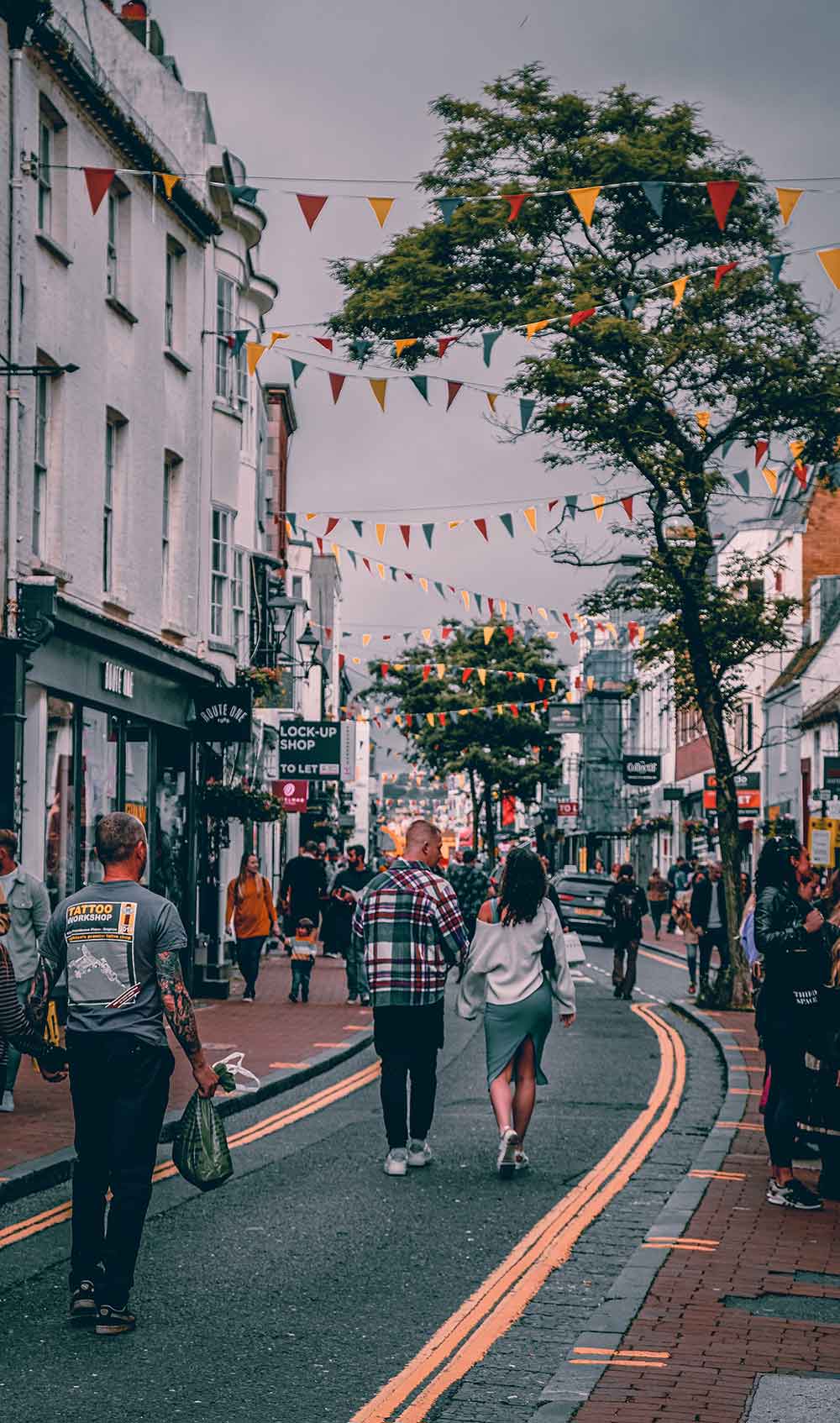
Photo by Evgeny Klimenchenko on Unsplash
The Market Diner
https://www.marketdinerbrighton.co.uk/
Brighton has some amazing fancy restaurants – from the venerable vegetarian grande dame Food for Friends through to innovative newcomer 64 Degrees. However when you tip out of the pubs and clubs at 3am, there is only one place to go. Tucked away on a hard-to-find little back street called Circus Street, the Market Diner has been serving up fried breakfasts, gut-busting burgers and fabulously greasy pizzas for at least twenty five years to my certain knowledge, and probably longer. At the long shared tables you will find clubbers scoffing down sausage sarnies next to lorry drivers, shift workers waiting in line with students, and taxi drivers having a hot cup of tea between jobs. The food definitely isn’t haute cuisine, and on Friday and Saturday nights the waits can be long, but when it’s two in the morning and a hot, salty bacon bap is just what you’re craving, it’s hard to beat. I can totally imagine Hal coming off a late shift at the pier and stopping off here for something hot on her way home.
The Mock Turtle Tea Room
I am a coffee addict, and if there is one thing you won’t struggle to find in Brighton, it’s a good espresso. In fact you’re spoiled for choice – the town even has its own coffee company, Small Batch Coffee (I can highly recommend their Goldstone decaf, available at their online shop, and one of the best decaffeinated coffees I’ve found).
However it is just possible to have enough Serra do Cabral ristrettos, or Oaxacan flat whites. And sometimes what a person needs is a good old fashioned cup of tea.
The Mock Turtle is (apparently) Brighton’s oldest tea room and I can well believe it. It certainly hasn’t changed much in the thirty or so years I’ve been going there. The little elbow-to-elbow tables, the teetering piles of cream-filled meringues, and the groaning shelves of Willow Pattern china are all straight out of a Miss Marple afternoon drama. It’s not the place to come for a turmeric latte, but then Hal is more the type of person for a welsh rarebit and a cuppa.
The Booth Museum
There’s no denying it, Brighton is, unfortunately an expensive place to live, in common with a lot of south east England. Rents are high, and the housing stock is mostly rickety Georgian and Victorian conversions, with windows that let in the sea winds during winter. However there are some fantastic free things to do – from the library, to the parks, to the Pier (free admission), the beach and many, many museums. All Brighton’s publicly owned museums are free to local residents (you have to take proof of residency) but I think Hal would have a soft spot for the magnificently creepy Booth museum, tucked a mile or so away from the town centre off Dyke Road and free to everyone, including visitors to the town.
Originally the private museum of the Victorian collector Edwin Booth, it was housed in the garden of Bleak House, his home on Dyke Road, and began as a result of his slightly blood-thirsty ambition to shoot and display an example of every single British bird.
I’m not sure whether Booth made good on his ambition, but he certainly seems to have got a fair way to achieving it. Some of the collection is photographic, but the bulk is skeletons, taxidermy and dead insects. It’s superbly macabre and very Victorian in its unashamed obsession with death. It’s also a warm, dry place to spend a cold winter day.